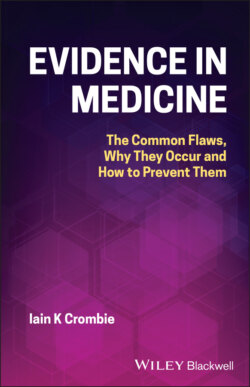Читать книгу Evidence in Medicine - Iain K. Crombie - Страница 38
CONCLUSIONS
ОглавлениеThis chapter has explored the many sources of bias that commonly afflict randomised controlled trials. The randomised controlled trial is held to be the gold standard for evidence on treatment effectiveness, but that gold is more than a little tarnished. One commentator concluded that randomised controlled trials are: ‘often flawed, mostly useless, clearly indispensable’ [106].
The two key questions for clinical trials are: how frequently do these flaws occur; and how big an effect do they exert on estimated effect sizes? The frequency of flaws varies across individual review studies and by the type of deficiency, so there is not a specific estimate of how often bias occurs. Instead we can put the frequencies on a scale from very rare to very common. As most of the estimates from review articles are in the fairly common or very common area, flaws are a serious problem.
The magnitude of bias from randomisation and allocation concealment is generally modest, amounting to a 10%–15% increase in the estimated treatment effect. However these estimates are averages based on large numbers of trials that cover many different types of treatment. It is likely that the impact of bias is much larger for some trials than others, although we do not know which.
Some of the weaknesses in clinical trials may simply be due to lack of knowledge or experience. This could explain deficiencies in the handling loss to follow‐up or the lack of blinding of outcome assessment. Tampering with the randomisation sequence, and the replacement of primary outcomes, suggests a less innocent explanation. The deficiencies described in this chapter, which may result from inadvertent mistakes or deliberate actions, pose a serious threat to the integrity of medical evidence. The next chapter describes weaknesses in study design and conduct that lead to wasted and unhelpful trials.
